Tomb Raider: The Angel of Darkness Designer Diary
One of cocreators of the Tomb Raider franchise talks about the latest appearance of Lara Croft in this exclusive designer diary.
Where Do You Go From Here?
By Jeremy Heath Smith
Managing Director/Tomb Raider Cocreator
Core Design
When starting to develop Tomb Raider, I don't think any of us thought we were working on a franchise that would go on to sell nearly 30 million units and have a successful movie series based on it. We were just doing what we enjoyed--making games. The reason for stating this obvious fact is that we created four further games from an idea which was only really for one game. In truth, we probably made two games too many, but that is now history and we can only learn from that and look to the future on the new consoles.
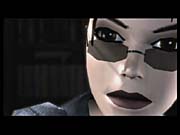
When we all sat down three years ago to start planning the next-generation Tomb Raider, we were faced with some tough decisions. There were key things we didn't want to change and other areas that needed expanding on. The big advantage we had was knowing that it is one of the largest franchises in the industry and that this time, we would be doing more than one game. The fact is, we sat down to design a trilogy.
The design team consisted of the lead members of the Tomb Raider team, plus myself and my brother. The team was adamant that this game would be the first of the Tomb Raider games where the player will actually understand the storyline. To make this work, we needed to ensure that the plot unfolds as you play the game, guiding you through the story right to the end. Our initial work was to come up with a story and locations. We knew we didn't want to go into sandstone-colored textures again, so the settings had to be more realistic without losing the elements of fantasy that the original Tomb Raiders had. We also had to expand the character of Lara. To help us communicate the plot, Lara was going to have to have conversations with other characters in the game. To continue with new attributes for Lara, we also wanted to build far more interaction with the environments into the game for her. The final new enhancement was the introduction of a new partner for Lara. We really felt that to expand the whole Tomb Raider experience, we needed to introduce a completely new game dynamic with a new character for you to play. After about three months of design meetings, we arrived at a pretty solid game design that included a strong storyline, new Lara attributes, and a new character called Kurtis.
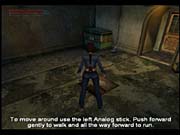
While the game design was being worked on, the programmers were assessing the capabilities of the PS2. In the early stages of development, this was difficult, as we didn't have PS2 development kits, so a lot of the design work was based on theory, which can create problems. When you are telling your level designers you can have "X" amount of memory to build levels, and then 12 months later you actually find out you can only have half the amount you were originally told, which means all the maps that have been built have to be rebuilt...well, I am sure you can imagine the reaction from our level designers!
During the design stage, the story isn't the only element that needs to be locked down--you have to consider the technical capacities of the engine as well. We know that gamers expect a state-of-the-art engine to go with the new design, and the first thing the coders agreed upon was that the game had to run in one frame (or 60 seconds). This without doubt separates us from all the other games. Having a game running in a frame gives you such a smoother game experience. This is one of the biggest issues we have had with the development--trying to keep it in a frame--and there have been times when we have considered dropping it to two frames, but now that it's finished and runs in a frame, I'm very pleased we didn't.
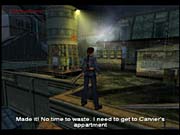
Throughout the design stage, we continually looked back at the previous games and tried to determine which parts people liked and which parts people disliked. Again, this is not as easy as it sounds, due to the fact that the games have sold so many copies. Trying to get an objective opinion is sometimes very difficult. When you talk to gamers who played Tomb Raider and Tomb Raider II, many of them don't like Tomb Raider III and Tomb Raider: The Last Revelation, and if you talk to players of Tomb Raider III and Tomb Raider: The Last Revelation and ask if they liked Tomb Raider and Tomb Raider II, most say yes. We found that people who bought the original Tomb Raider and Tomb Raider II are more-serious gamers than the people who bought Tomb Raider III and Tomb Raider: The Last Revelation. The gamers who bought Tomb Raider III and Tomb Raider: The Last Revelation seem to be more mass-market. We did change the series' dynamic for Tomb Raider III and Tomb Raider: The Last Revelation, deliberately aiming them at a more mass-market consumer, but we hadn't reckoned on losing the gamers who bought Tomb Raider and Tomb Raider II. So, our dilemma for the next-generation title was, which consumer do we aim the game at? Of course, the only real answer was both, which I can assure you is easier said than done. The truth is, we will not know if we got it right until the game has shipped and both sets of gamers have played it. We did, however, try to cover all the bases.
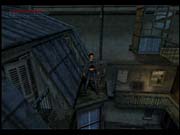
Designing a completely new engine on new hardware is not a task to be taken on by the fainthearted. There are many talented developers who have tried, and it hasn't worked for them. We have written a new engine in three years with a programming resource of seven people and a total team size of 35. Metal Gear Solid 2, which I consider to be the only other real next-generation engine to have been written, took five years with 100 people. The lessons we have learned moving forward is that our team size needs to increase to ensure a smoother transition of engines. Plus, we broke a golden rule--never develop a game while you are developing your technology, because you can't be efficient continually chasing your technology. Lessons learned for the future.
Settling on a Story
Settling on the story for the new Tomb Raider game was actually one of the easier parts of making the game. We decided on the storyline and the setting early on. In fact, the original locations for this game were cut in half nearly two years ago, as the game was heading for 70-plus hours of gameplay and probably another 12 months of development. What was interesting is that we were actually able to take out the middle section of the game and it still flowed as if that section were never there.
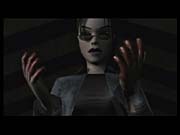
We chose Paris and Prague because of the way they fit into the overall story we had planned. Paris is steeped in history, and because the story is based on finding five paintings, where better than the capital of art? Prague fell nicely in line for us, as this city is only now really becoming known around the world, and it portrays a very cool image with a twist of the unknown, which is exactly the kind of atmosphere we needed for the levels in the game.
As I said earlier, we really want the player to understand the story in this game, and to do that, the decision had to be made whether to use FMV or cutscenes. Both have their advantages--FMV looks awesome, but it isn't true in-game, whereas cutscenes have more flexibility as to how they can be used, but they're much more difficult to stream into the game. We actually settled on a mix of 20 percent FMV, 80 percent cutscene. We know by using cutscenes we would have more flexibility in how the story is portrayed. We ended up with more than 30 minutes of in-game cutscenes, which has taken a team of animators nearly 12 months to implement. Then the voice acting and music had to be dealt with. Again, we decided that we would go full out and hired the London Symphony Orchestra, which is one of the best orchestras in Europe. The approach of writing the music for the game in the same way as writing a score for a movie has really opened our eyes on how the two industries are coming closer together in certain areas.
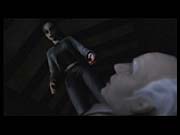
Whether the movie business has as big an influence on our industry as many would think is a hotly debated subject for us. We drew very little inspiration from movies. Television was actually a far greater influence. As we knew from the start that we're doing a trilogy, where better to look than TV? These guys have been writing series for years and making millions of viewers tune in week after week. The one series that I think brought this home to us the most was The X-Files. The cool thing with The X-Files is, does it ever really end week on week? This is exactly the kind of feeling we want to get into our game.
Got a news tip or want to contact us directly? Email news@gamespot.com
Join the conversation